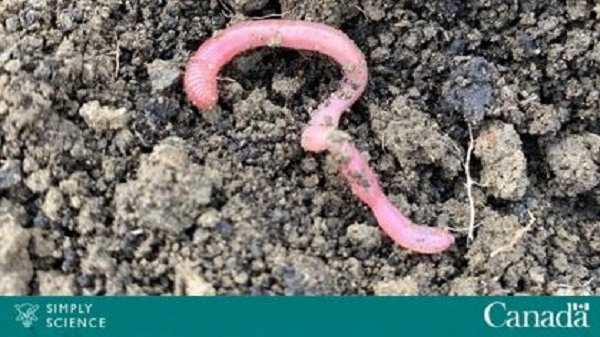 Recent scientific research tells us that earthworms could be a threat to Canada’s boreal forest and its essential role in the fight against climate change. …“Most earthworms disappeared from North America during the last ice age more than ten thousand years ago,” explains Dr. Jérôme Laganière, a research scientist at the Laurentian Forestry Centre of Natural Resources Canada. “They reappeared in the 18th century with the settlement of European colonists, probably transported with the soil from tomato plants.” …Earthworms are voracious, attacking the organic part of the soil called humus, which is composed of moss, leaves, tree debris and other organic material. Humus can easily reach a thickness of 10 to 15 centimetres in the boreal forest. As a result, by consuming this material, earthworms are actually destroying a carbon reservoir and releasing carbon dioxide (CO2) into the atmosphere, which contributes to climate change.
Recent scientific research tells us that earthworms could be a threat to Canada’s boreal forest and its essential role in the fight against climate change. …“Most earthworms disappeared from North America during the last ice age more than ten thousand years ago,” explains Dr. Jérôme Laganière, a research scientist at the Laurentian Forestry Centre of Natural Resources Canada. “They reappeared in the 18th century with the settlement of European colonists, probably transported with the soil from tomato plants.” …Earthworms are voracious, attacking the organic part of the soil called humus, which is composed of moss, leaves, tree debris and other organic material. Humus can easily reach a thickness of 10 to 15 centimetres in the boreal forest. As a result, by consuming this material, earthworms are actually destroying a carbon reservoir and releasing carbon dioxide (CO2) into the atmosphere, which contributes to climate change.



 If you thought the BC NDP government has made significant progress protecting awe-inspiring, irrecoverable old-growth forests that don’t exist anywhere else, think again. … Despite recent government ads and misleading media reports that make it sound like a vast area of old-growth was recently protected, a provincial mid-December update offered no clarity on how much of these most endangered forests has been set aside but indicates that the majority of the contacted Nations have not yet made a decision. A high-level review of provincial logging data by Sierra Club BC shows that thousands of hectares that were proposed for deferrals have already been logged, and thousands more are on the chopping block for the coming months. … Current provincial commitments for “new capacity funding of up to $12.69 million” to support Indigenous Nations and “nearly $19 million in new funding” for workers, contractors and communities, are insufficient to enable long-term protection for old-growth forests.
If you thought the BC NDP government has made significant progress protecting awe-inspiring, irrecoverable old-growth forests that don’t exist anywhere else, think again. … Despite recent government ads and misleading media reports that make it sound like a vast area of old-growth was recently protected, a provincial mid-December update offered no clarity on how much of these most endangered forests has been set aside but indicates that the majority of the contacted Nations have not yet made a decision. A high-level review of provincial logging data by Sierra Club BC shows that thousands of hectares that were proposed for deferrals have already been logged, and thousands more are on the chopping block for the coming months. … Current provincial commitments for “new capacity funding of up to $12.69 million” to support Indigenous Nations and “nearly $19 million in new funding” for workers, contractors and communities, are insufficient to enable long-term protection for old-growth forests. 
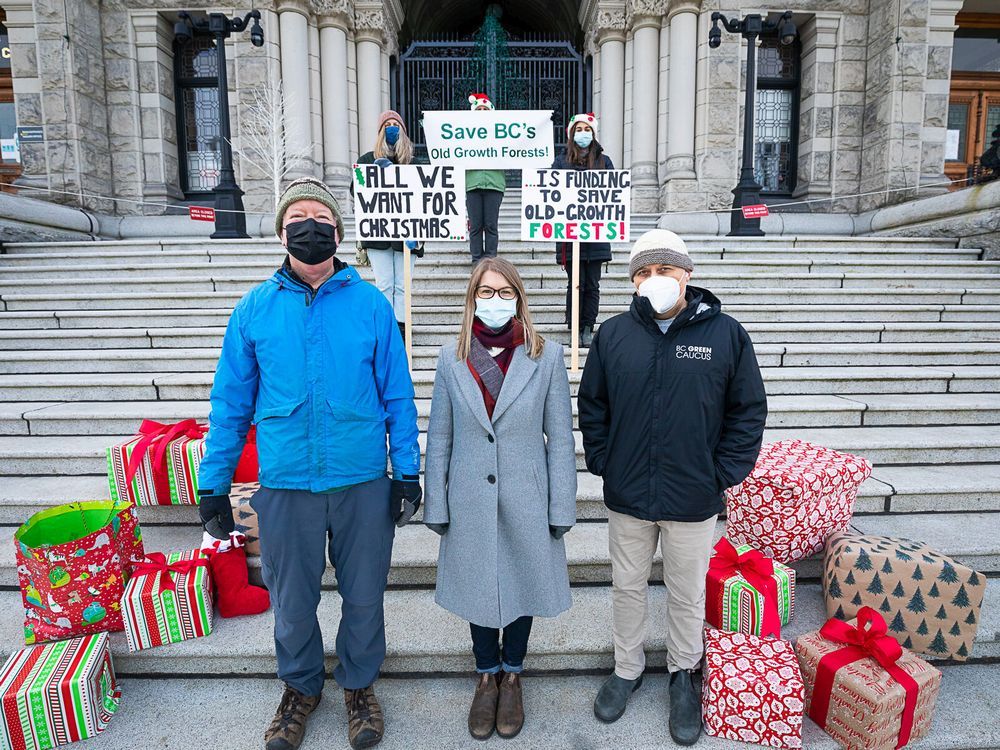

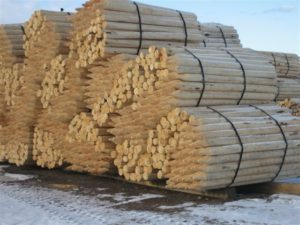
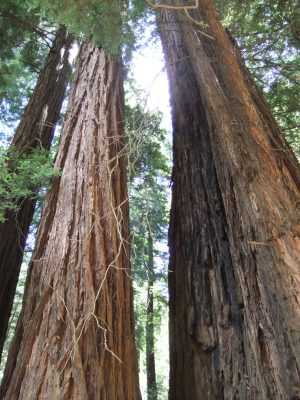 The RCMP has spent more than $6.8 million enforcing a court injunction against anti-logging protesters camped out at Fairy Creek in B.C., which has led to nearly 1,200 arrests this year. The document shows the majority of costs came from “personnel,” listed at nearly $4.7-million in expenses, and “transportation and telecommunications,” at around $1.4 million. …Staff Sgt. Janelle Shoihet said enforcing a court order from the Supreme Court of British Columbia is not an “optional” invitation or suggestion. …“We do not have the option of refusing to enforce Court Orders and injunctions nor can we delay that action indefinitely.” …Conrad Browne for Teal-Jones, said the $6.8-million in RCMP costs “pales in comparison” to how much the company has spent on the Fairy Creek logging operations. …A major source of frustration and costs for the company have been the deep trenches that protesters have dug to prevent access to the logging sites, Browne said.
The RCMP has spent more than $6.8 million enforcing a court injunction against anti-logging protesters camped out at Fairy Creek in B.C., which has led to nearly 1,200 arrests this year. The document shows the majority of costs came from “personnel,” listed at nearly $4.7-million in expenses, and “transportation and telecommunications,” at around $1.4 million. …Staff Sgt. Janelle Shoihet said enforcing a court order from the Supreme Court of British Columbia is not an “optional” invitation or suggestion. …“We do not have the option of refusing to enforce Court Orders and injunctions nor can we delay that action indefinitely.” …Conrad Browne for Teal-Jones, said the $6.8-million in RCMP costs “pales in comparison” to how much the company has spent on the Fairy Creek logging operations. …A major source of frustration and costs for the company have been the deep trenches that protesters have dug to prevent access to the logging sites, Browne said.
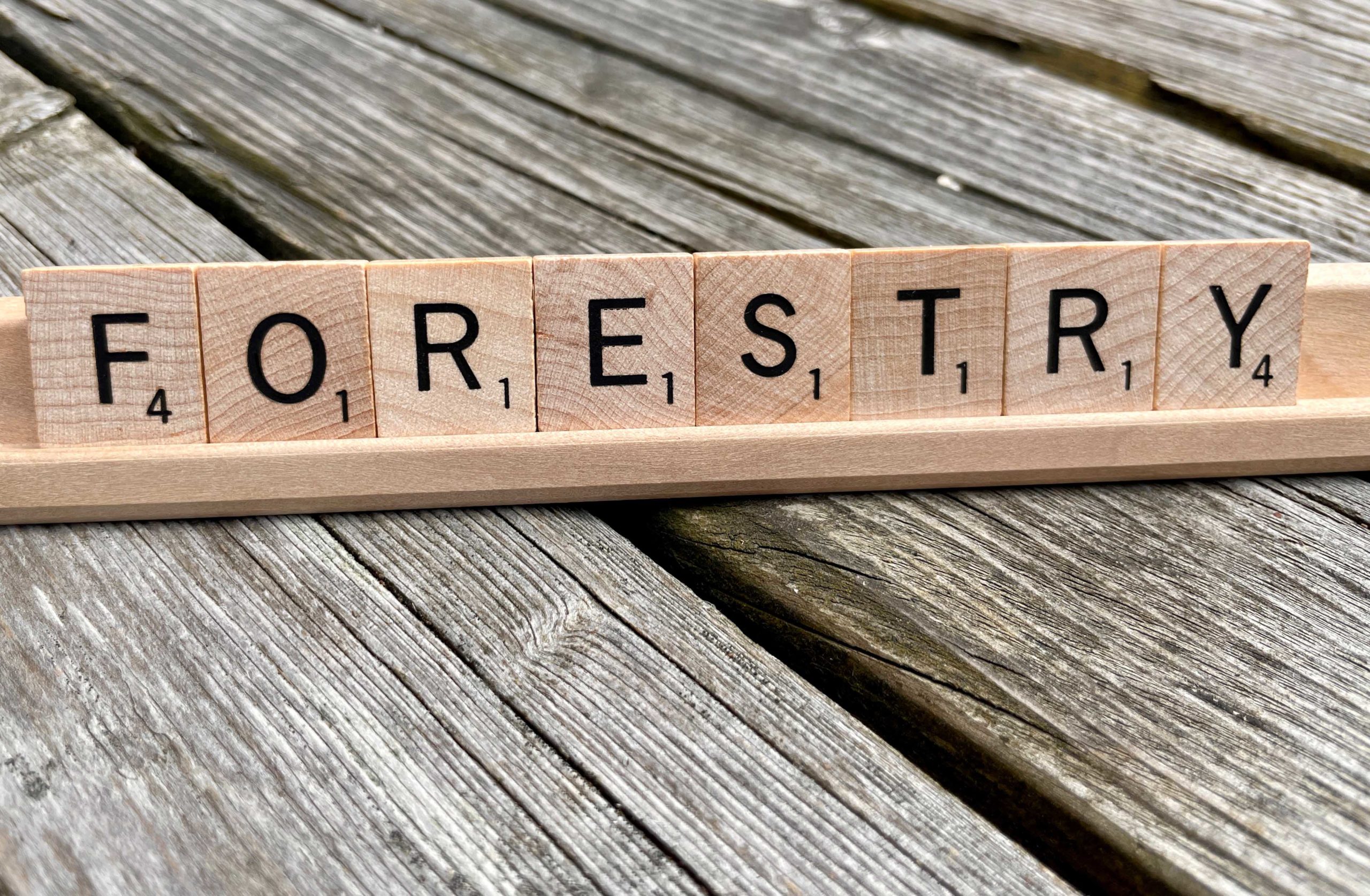 I was surprised to read the comments made by (Osoyoos Indian Band Chief) Clarence Louie regarding the unreliability of the Vegetation Resource Inventory (VRI). I’m a member of a third generation B.C. forest inventory family and we, along with other qualified forest inventory specialists, were responsible for gathering data for the VRI program. We were contracted to do so by the Government of B.C., as well as private licensees. This work consisted of several thousand man-days spent in forests throughout B.C. gathering tree, plant and soil data. The information we gathered was subject to stringent quality assurance checks by other qualified forest inventory specialists. By no means was the VRI data-set based solely on aerial photography and predictive modelling. It was supported in large part by boots on the ground forestry work, done by highly capable forestry professionals.
I was surprised to read the comments made by (Osoyoos Indian Band Chief) Clarence Louie regarding the unreliability of the Vegetation Resource Inventory (VRI). I’m a member of a third generation B.C. forest inventory family and we, along with other qualified forest inventory specialists, were responsible for gathering data for the VRI program. We were contracted to do so by the Government of B.C., as well as private licensees. This work consisted of several thousand man-days spent in forests throughout B.C. gathering tree, plant and soil data. The information we gathered was subject to stringent quality assurance checks by other qualified forest inventory specialists. By no means was the VRI data-set based solely on aerial photography and predictive modelling. It was supported in large part by boots on the ground forestry work, done by highly capable forestry professionals.

 The membership of the Canadian Association of Retired Persons, Nova Scotia chapter (CARP NS), is comprised of seniors and others 45 years of age and older. This is a stage of life when thoughts increasingly turn to the legacy our generation will leave to our grandchildren and those who will follow. Considered from this perspective, the debate that is raging across Nova Scotia over the state of the province’s forests, particularly Crown-owned forest lands, is troubling and, frankly, alarming. …The obvious concern, identified in Lahey’s evaluation report …is that Crown lands required to meet the 20 per cent protection target …will continue to be lost to aggressive industrial forestry harvesting operations. CARP NS therefore finds itself in agreement with recommendations to significantly curtail industrial forestry operations on Crown land over the timeframe required for planning to meet the protected areas target and to delineate the triad zoning system.
The membership of the Canadian Association of Retired Persons, Nova Scotia chapter (CARP NS), is comprised of seniors and others 45 years of age and older. This is a stage of life when thoughts increasingly turn to the legacy our generation will leave to our grandchildren and those who will follow. Considered from this perspective, the debate that is raging across Nova Scotia over the state of the province’s forests, particularly Crown-owned forest lands, is troubling and, frankly, alarming. …The obvious concern, identified in Lahey’s evaluation report …is that Crown lands required to meet the 20 per cent protection target …will continue to be lost to aggressive industrial forestry harvesting operations. CARP NS therefore finds itself in agreement with recommendations to significantly curtail industrial forestry operations on Crown land over the timeframe required for planning to meet the protected areas target and to delineate the triad zoning system.
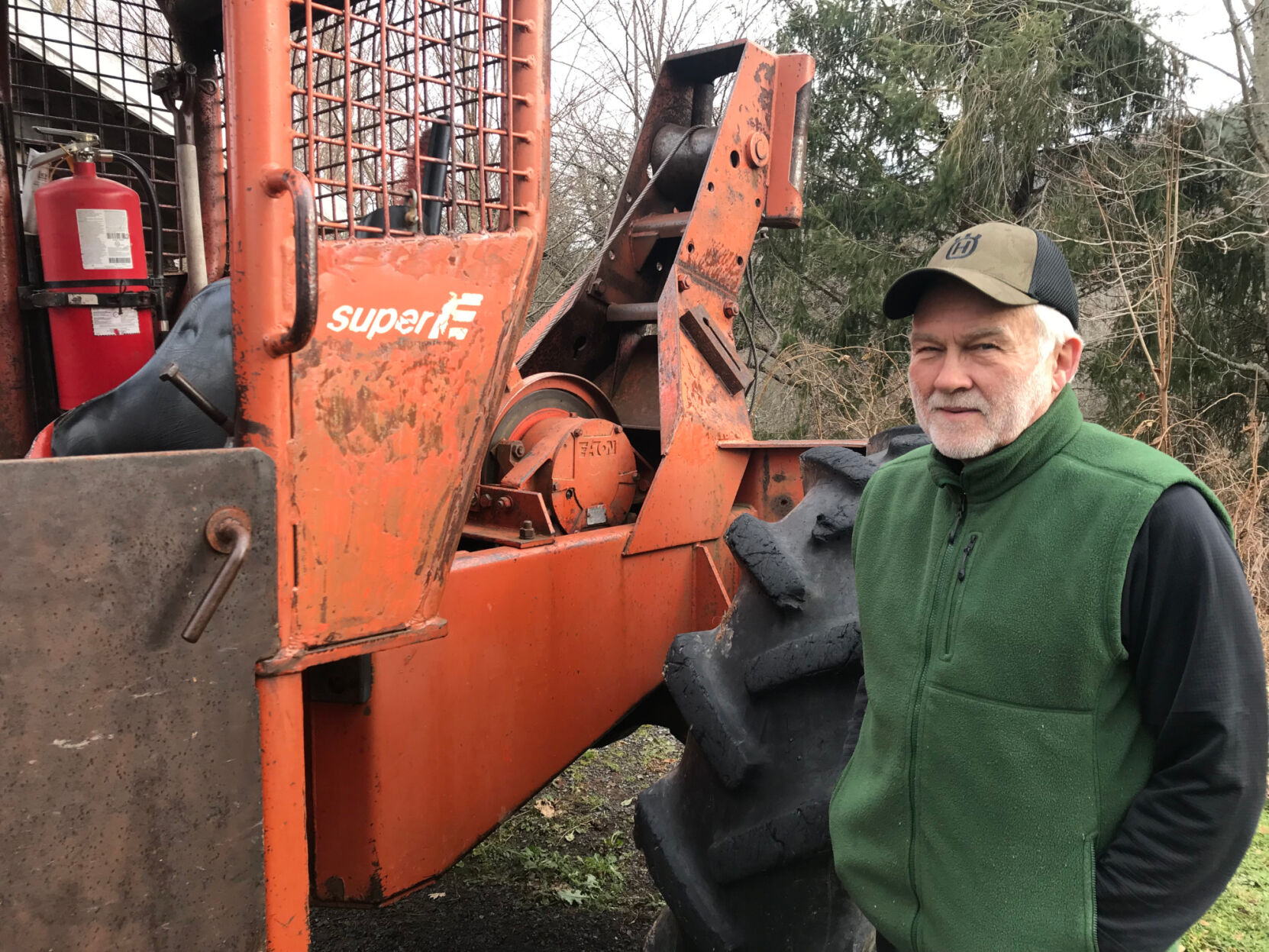

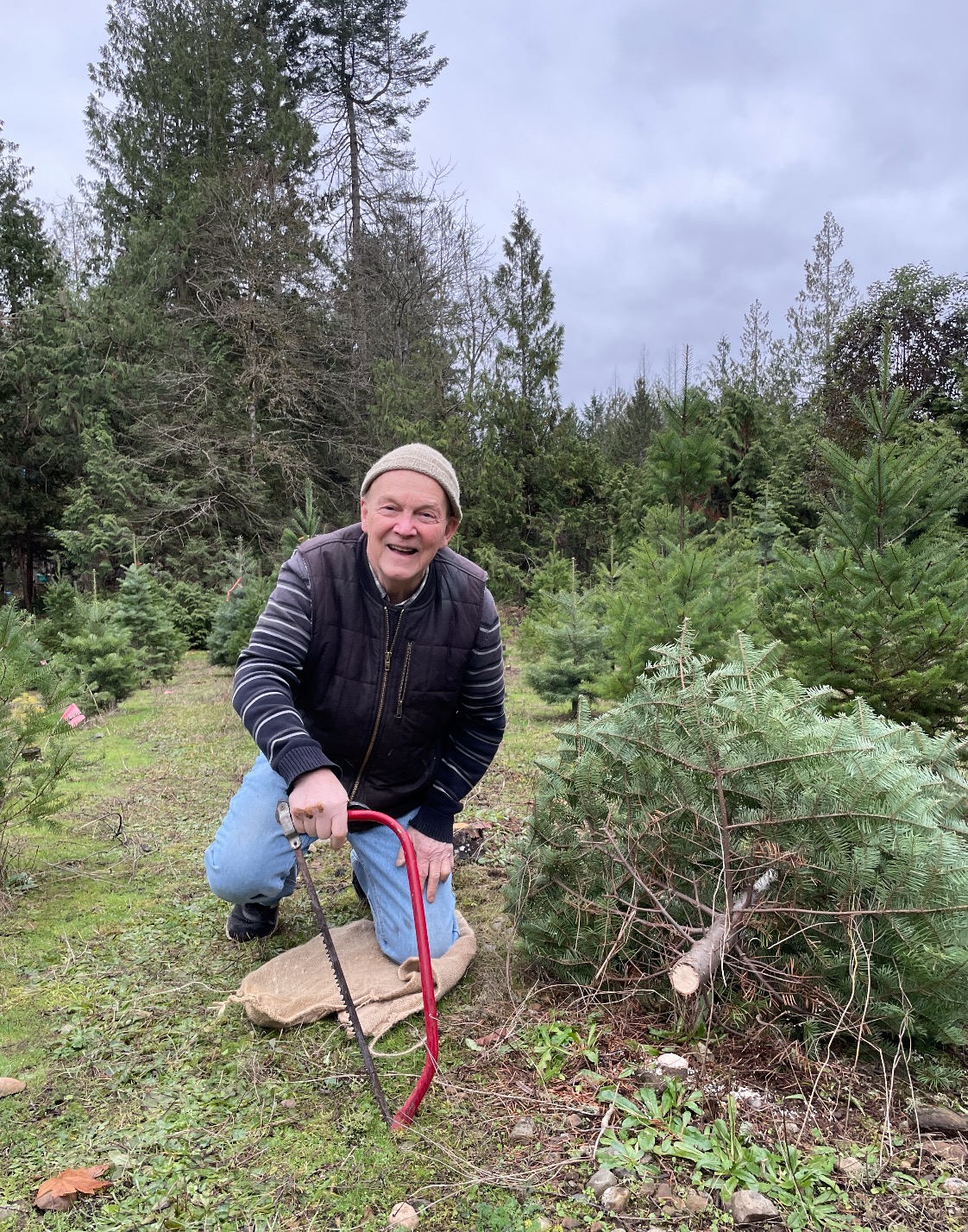 Placed among a neat row of fresh-cut evergreen trees, an eight-foot Fraser fir with a thick coat of needles stands like a handsome sentinel in a crowd of green. The tree, selling for $145 is a real beauty. If all goes to plan, a family will take the tree home and adorn it with lights, ornaments and tinsel. …Christmas trees owe their existence, survival and specific shape to years of painstaking care and attention. …Evergreens have played a role in winter celebrations for thousands of years. Ancient Egyptians adorned their homes with green date palm leaves; Romans observed Saturnalia by surrounding themselves with evergreen boughs; and the pre-Christian Druids hung mistletoe. Today, Christmas trees are a big business. Approximately 94 million U.S. households will decorate their homes this December with either fresh or artificial trees, according to the American Christmas Tree Association. …The story of how a tree like the conifer in Annapolis finds its way to a living room involves a journey of hundreds of miles and more than a decade of meticulous care.
Placed among a neat row of fresh-cut evergreen trees, an eight-foot Fraser fir with a thick coat of needles stands like a handsome sentinel in a crowd of green. The tree, selling for $145 is a real beauty. If all goes to plan, a family will take the tree home and adorn it with lights, ornaments and tinsel. …Christmas trees owe their existence, survival and specific shape to years of painstaking care and attention. …Evergreens have played a role in winter celebrations for thousands of years. Ancient Egyptians adorned their homes with green date palm leaves; Romans observed Saturnalia by surrounding themselves with evergreen boughs; and the pre-Christian Druids hung mistletoe. Today, Christmas trees are a big business. Approximately 94 million U.S. households will decorate their homes this December with either fresh or artificial trees, according to the American Christmas Tree Association. …The story of how a tree like the conifer in Annapolis finds its way to a living room involves a journey of hundreds of miles and more than a decade of meticulous care.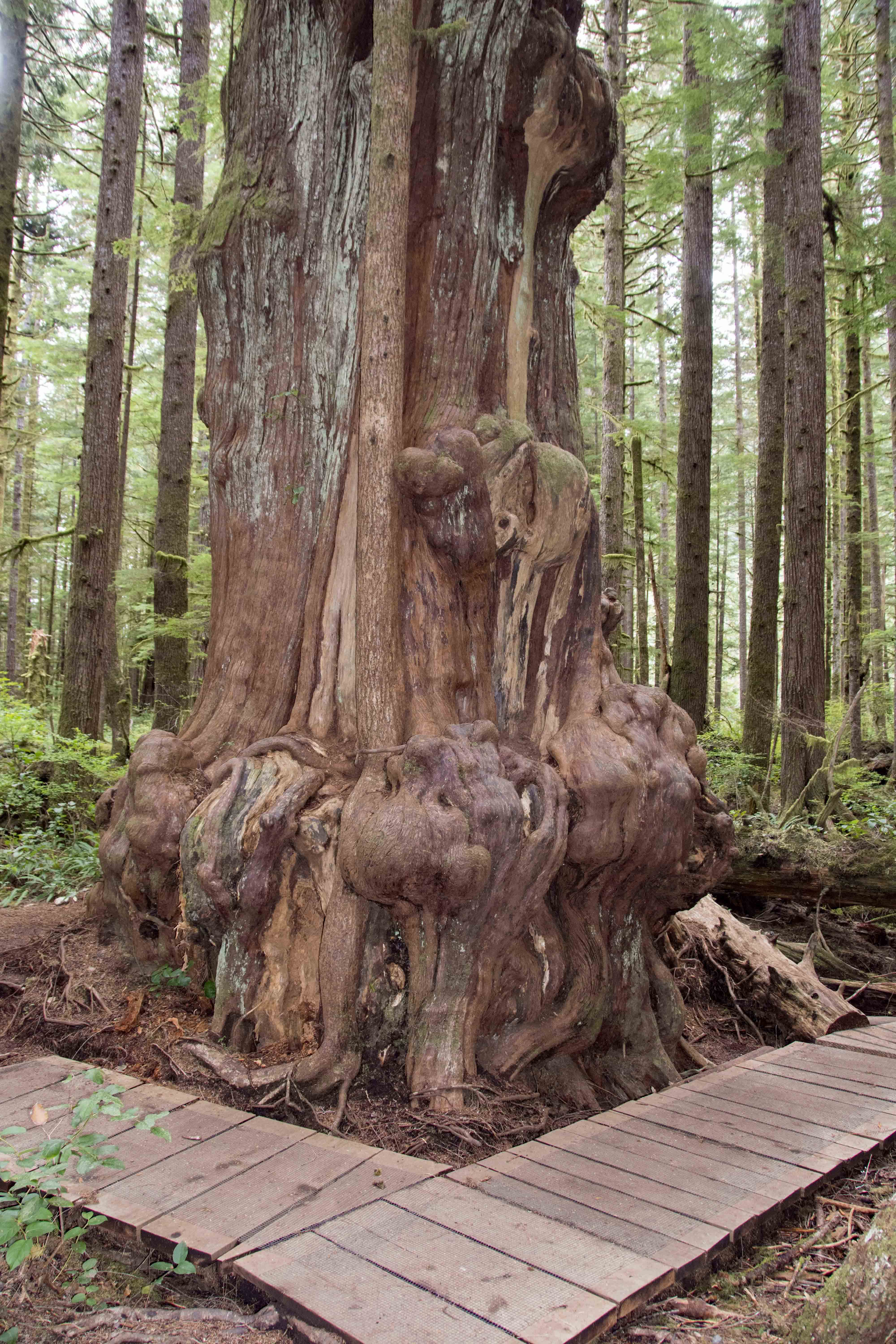 But some conifers and other trees theoretically could live forever, according to a recent essay that reviews accumulating evidence on extremely long-lived trees—and calls for more scientifically rigorous methods to determine their age and study their longevity. Across the board, trees do not die so much as they are killed, write the authors of the review essay, entitled “On Tree Longevity.” Their killers are external physical or biological factors rather than old age alone. That is, there is no evidence that harmful genetic mutations pile up over time or that trees lose their ability to produce new tissue. “Trees can indeed live indefinitely, but this does not happen,” says co-author Franco Biondi, an ecoclimatologist and tree-ring scientist at the University of Nevada, Reno. “Because eventually an external agent, biotic or abiotic [a living thing or a nonliving one such as a physical condition], ends up killing them.”
But some conifers and other trees theoretically could live forever, according to a recent essay that reviews accumulating evidence on extremely long-lived trees—and calls for more scientifically rigorous methods to determine their age and study their longevity. Across the board, trees do not die so much as they are killed, write the authors of the review essay, entitled “On Tree Longevity.” Their killers are external physical or biological factors rather than old age alone. That is, there is no evidence that harmful genetic mutations pile up over time or that trees lose their ability to produce new tissue. “Trees can indeed live indefinitely, but this does not happen,” says co-author Franco Biondi, an ecoclimatologist and tree-ring scientist at the University of Nevada, Reno. “Because eventually an external agent, biotic or abiotic [a living thing or a nonliving one such as a physical condition], ends up killing them.”
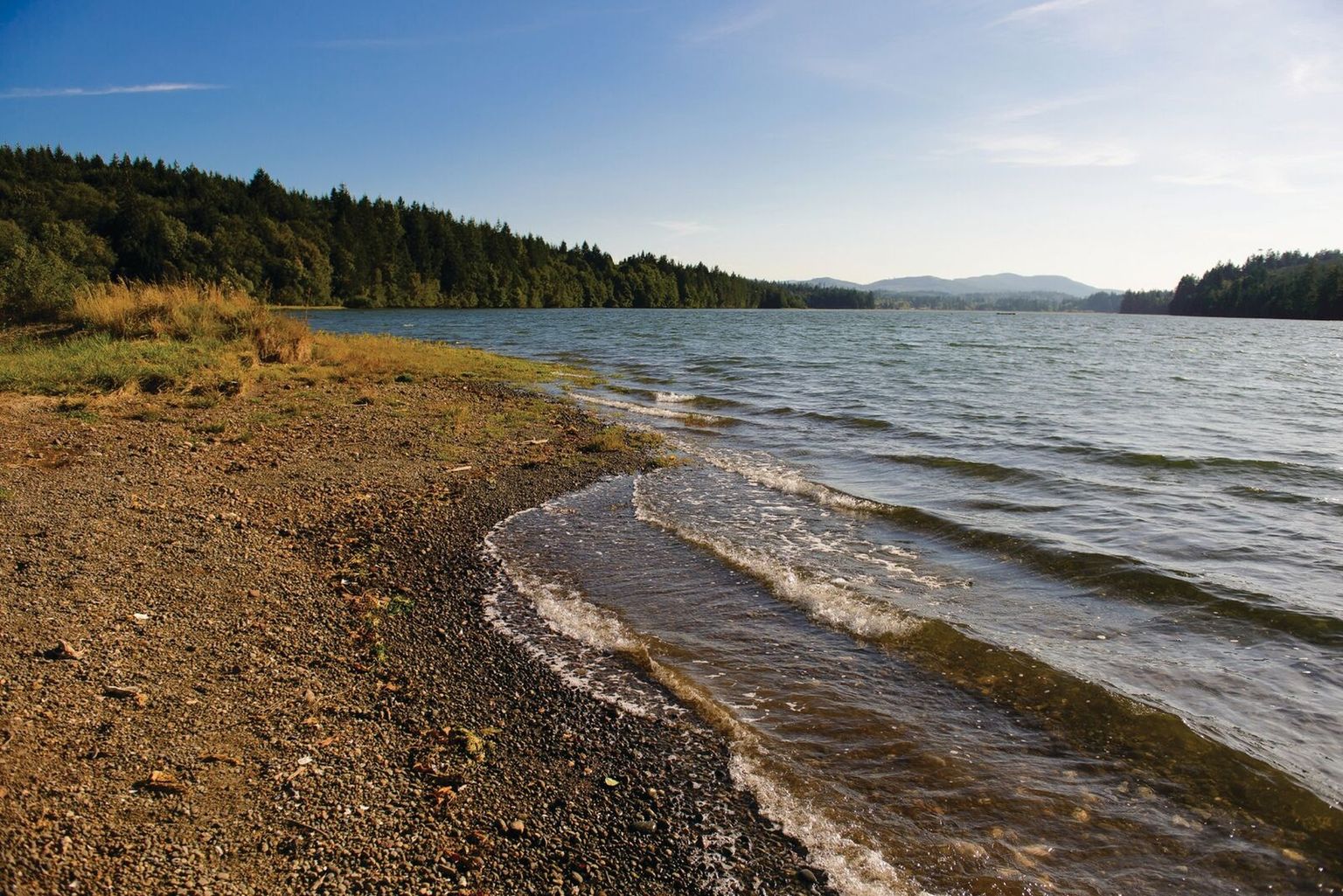

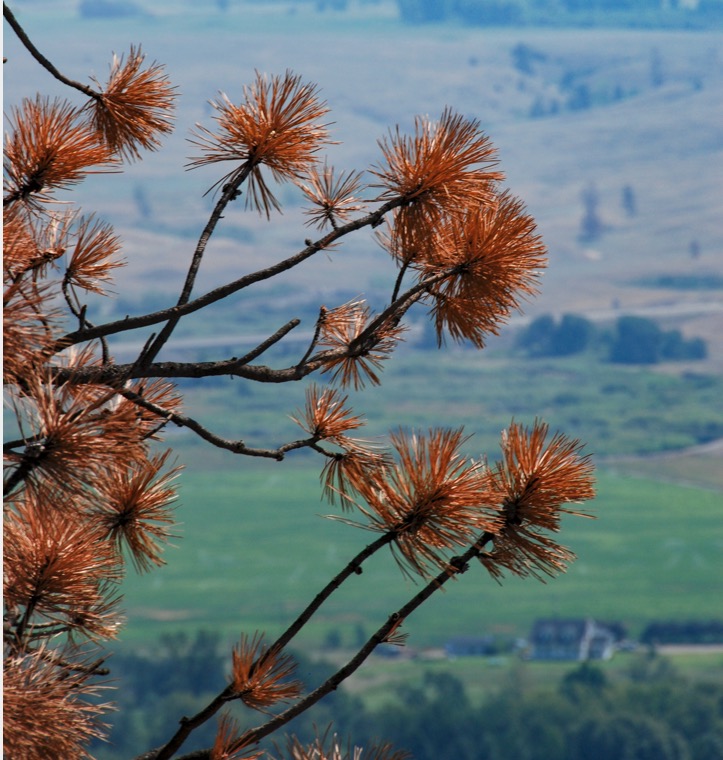 A team of researchers using Los Alamos National Laboratory’s supercomputers developed a model for projecting tree kills by bark beetles as the climate warms. Looking at forests in California, the team of researchers found that western pine beetle infestations killed 30 percent more trees due to warmer temperatures than they would have killed under drought conditions alone. While the study focused on California forests, study author Chonggang Xu, a senior LANL scientist, said he anticipates the trend will hold true for forests throughout the western United States, including in New Mexico. Xu said that the number of trees killed because of warmer temperatures surprised him. …Based on the modeling, the team projects that 35 to 40 percent more ponderosa pines will die from beetle attacks for each degree Celsius of warming. …Xu said forests should be managed to promote a diverse age range of trees rather than removing small trees and preserving the large ones.
A team of researchers using Los Alamos National Laboratory’s supercomputers developed a model for projecting tree kills by bark beetles as the climate warms. Looking at forests in California, the team of researchers found that western pine beetle infestations killed 30 percent more trees due to warmer temperatures than they would have killed under drought conditions alone. While the study focused on California forests, study author Chonggang Xu, a senior LANL scientist, said he anticipates the trend will hold true for forests throughout the western United States, including in New Mexico. Xu said that the number of trees killed because of warmer temperatures surprised him. …Based on the modeling, the team projects that 35 to 40 percent more ponderosa pines will die from beetle attacks for each degree Celsius of warming. …Xu said forests should be managed to promote a diverse age range of trees rather than removing small trees and preserving the large ones.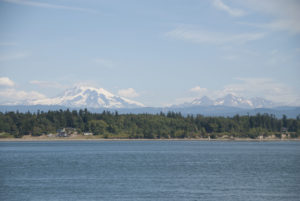 Port Blakely Companies, a family-owned company with timber operations in the U.S. and New Zealand, has returned 2 miles of waterfront and 125 acres of tidelands on Little Skookum Inlet in Mason County to the Squaxin Island Tribe, at no cost. … The return of the shoreline restores the tribe’s direct access to Puget Sound, and some of the most productive shellfish beds in the region — the very reasons the tribe had made the land and water home. In a separate transaction, the tribe also reached agreement with Port Blakely to acquire about 875 acres of upland forest in its ancestral lands for an undisclosed sum. The … property was acquired by Port Blakely following the signing of the 1854 Medicine Creek Treaty 167 years ago … Kris Peters, chairman of the Squaxin Island Tribe, said the tribe has no plans for development of the property, which will be cherished for ceremonial use.
Port Blakely Companies, a family-owned company with timber operations in the U.S. and New Zealand, has returned 2 miles of waterfront and 125 acres of tidelands on Little Skookum Inlet in Mason County to the Squaxin Island Tribe, at no cost. … The return of the shoreline restores the tribe’s direct access to Puget Sound, and some of the most productive shellfish beds in the region — the very reasons the tribe had made the land and water home. In a separate transaction, the tribe also reached agreement with Port Blakely to acquire about 875 acres of upland forest in its ancestral lands for an undisclosed sum. The … property was acquired by Port Blakely following the signing of the 1854 Medicine Creek Treaty 167 years ago … Kris Peters, chairman of the Squaxin Island Tribe, said the tribe has no plans for development of the property, which will be cherished for ceremonial use.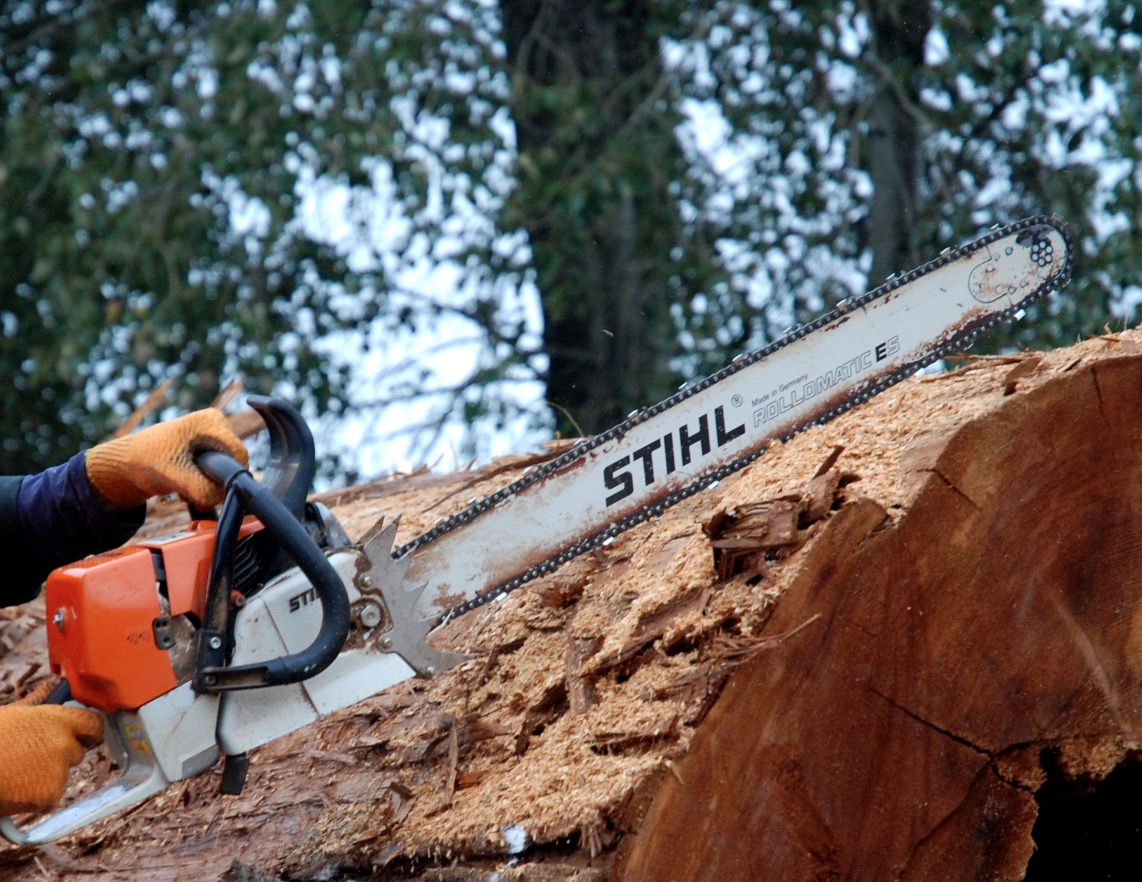 BOISE, Idaho — The U.S. Forest Service violated numerous environmental laws in approving a 105-square-mile logging and restoration project in west-central Idaho, a conservation group alleges in a lawsuit. The Idaho Conservation League in the lawsuit filed Monday said the Forest Service violated the Endangered Species Act and other laws in approving the 20-year Sage Hen Project in the Boise National Forest in April. The Idaho Conservation League has a history of working with the Forest Service to shape various projects, but said this one had flaws. One of the group’s primary concerns involved requiring a fuller environmental study of the project’s ramifications. …The Forest Service has said the project will make the forest more resistant to insect outbreaks, reduce wildfire fuel hazards and remove dead trees, making it safe for firefighters and the public.
BOISE, Idaho — The U.S. Forest Service violated numerous environmental laws in approving a 105-square-mile logging and restoration project in west-central Idaho, a conservation group alleges in a lawsuit. The Idaho Conservation League in the lawsuit filed Monday said the Forest Service violated the Endangered Species Act and other laws in approving the 20-year Sage Hen Project in the Boise National Forest in April. The Idaho Conservation League has a history of working with the Forest Service to shape various projects, but said this one had flaws. One of the group’s primary concerns involved requiring a fuller environmental study of the project’s ramifications. …The Forest Service has said the project will make the forest more resistant to insect outbreaks, reduce wildfire fuel hazards and remove dead trees, making it safe for firefighters and the public. 
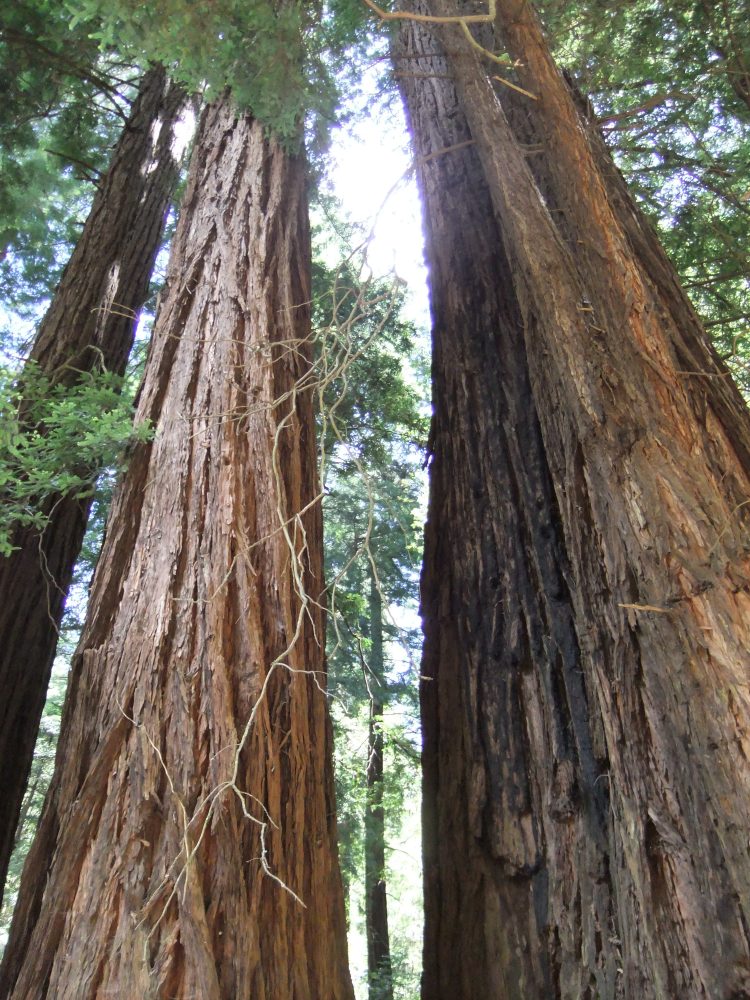 The devastating wildfires that ripped through California consumed nearly a fifth of the world’s giant sequoias, the largest trees on Earth by volume. …While sequoias evolved with wildfire and need it to open their seed cones and to clear the forest floor so the seeds can germinate, the fires over the last two years—exacerbated by climate change-driven drought—were simply too hot. …Save the Redwoods League funded a multiyear project to sequence the genomes of both the giant sequoia and the coast redwood. …By comparing the coast redwood genome to other species of conifers, the researchers found a number of stress response genes, which could contribute to the trees’ longevity, including those involved in “fungal disease resistance, detoxification, and physical injury/structural remodeling.” …It will also help to identify the genetic traits that might do best in warmer, dryer climates, because that’s the direction California is headed.
The devastating wildfires that ripped through California consumed nearly a fifth of the world’s giant sequoias, the largest trees on Earth by volume. …While sequoias evolved with wildfire and need it to open their seed cones and to clear the forest floor so the seeds can germinate, the fires over the last two years—exacerbated by climate change-driven drought—were simply too hot. …Save the Redwoods League funded a multiyear project to sequence the genomes of both the giant sequoia and the coast redwood. …By comparing the coast redwood genome to other species of conifers, the researchers found a number of stress response genes, which could contribute to the trees’ longevity, including those involved in “fungal disease resistance, detoxification, and physical injury/structural remodeling.” …It will also help to identify the genetic traits that might do best in warmer, dryer climates, because that’s the direction California is headed.
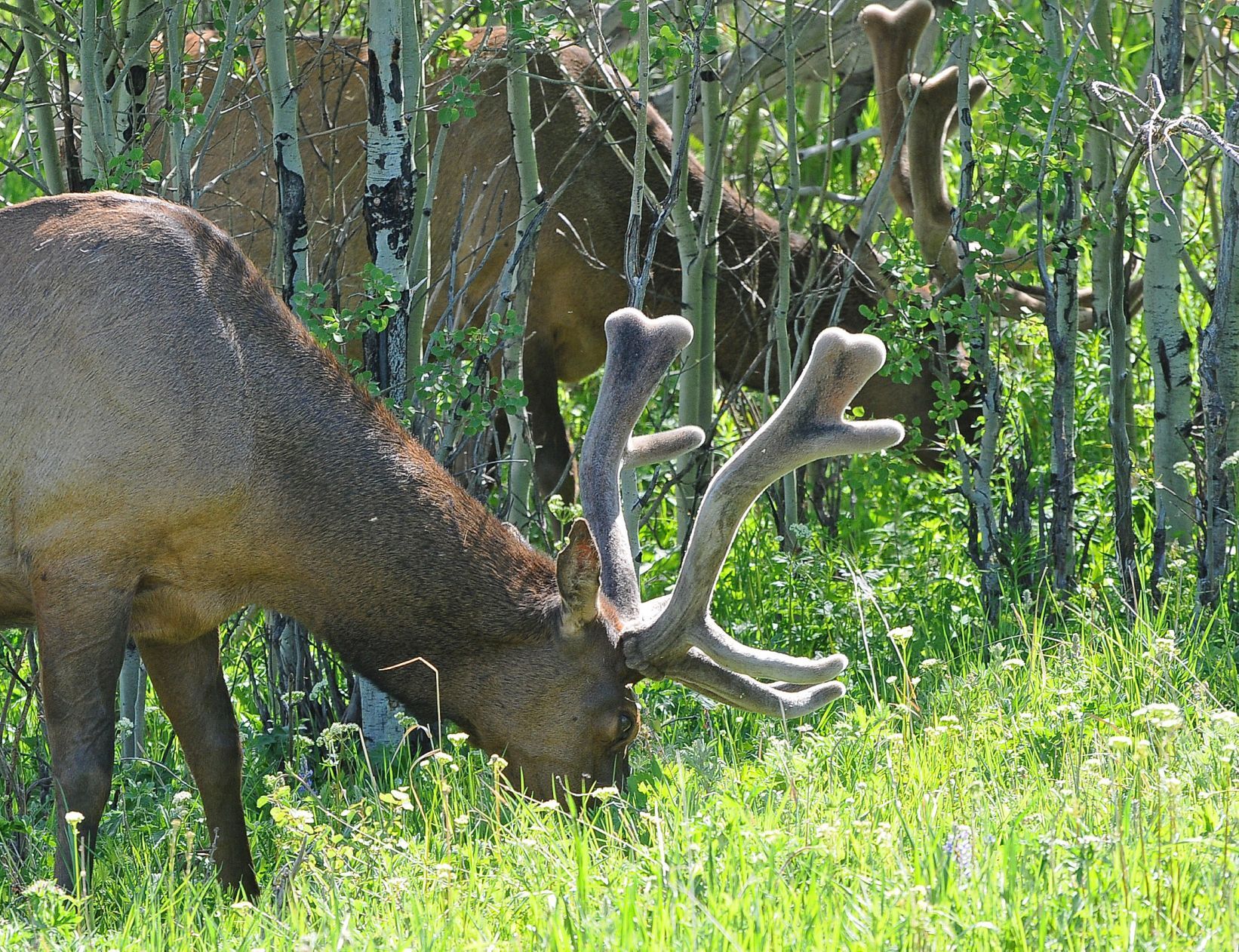
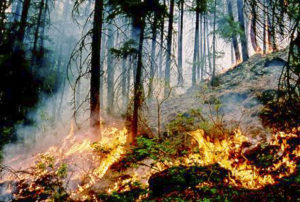 The Kansas Forest Service has revised down the number of acres burned in last week’s wildfires. The agency posted on Facebook Tuesday that around 163,000 acres burned on Dec. 15, not the 400,000 that was first estimated. The Forest Service released a map showing the number of burned acres in each county. The posting said the Forest Service and the National Interagency Fire Coordination Center are using a new satellite data system to map ongoing wildfires. The service said that as heat, dust and smoke cleared, “the satellite was able to get a clearer picture of the landscape.” The technology also showed that some of the fires’ perimeters were calculated twice. Two men died in the wildfires fueled by dry conditions and strong winds.
The Kansas Forest Service has revised down the number of acres burned in last week’s wildfires. The agency posted on Facebook Tuesday that around 163,000 acres burned on Dec. 15, not the 400,000 that was first estimated. The Forest Service released a map showing the number of burned acres in each county. The posting said the Forest Service and the National Interagency Fire Coordination Center are using a new satellite data system to map ongoing wildfires. The service said that as heat, dust and smoke cleared, “the satellite was able to get a clearer picture of the landscape.” The technology also showed that some of the fires’ perimeters were calculated twice. Two men died in the wildfires fueled by dry conditions and strong winds.



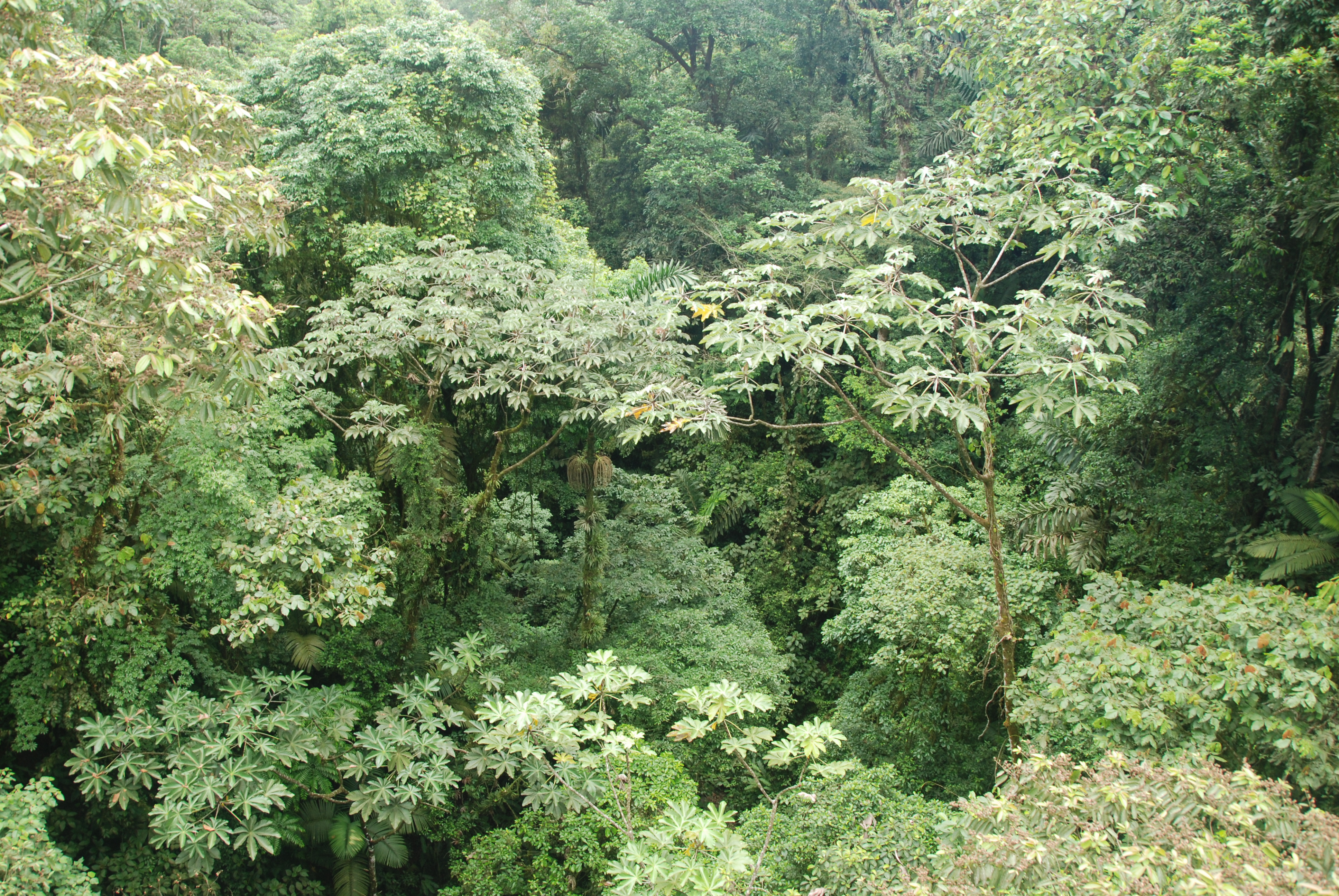 Latin American forests… will likely continue to shrink in size and economic clout, but not necessarily in their ability to help fight global warming, according to new research from Georgia Tech’s School of Public Policy. The study … evaluated different socioeconomic and climate-change scenarios to assess what the timber market and forests will look like in the future. They found that, in a future with minimal warming, Latin American forests likely will continue to lose ground to agricultural uses. In a more dire climate scenario, forested areas still shrink. Still, the ability of the smaller forests to capture and hold carbon is projected to suffer less as increased atmospheric carbon boosts tree growth. …However, increased demand for timber in some scenarios would likely result in additional planting on timber plantations …these new managed forests could help offset the potential damages of climate change in terms of tree migration and increase in dieback rate.
Latin American forests… will likely continue to shrink in size and economic clout, but not necessarily in their ability to help fight global warming, according to new research from Georgia Tech’s School of Public Policy. The study … evaluated different socioeconomic and climate-change scenarios to assess what the timber market and forests will look like in the future. They found that, in a future with minimal warming, Latin American forests likely will continue to lose ground to agricultural uses. In a more dire climate scenario, forested areas still shrink. Still, the ability of the smaller forests to capture and hold carbon is projected to suffer less as increased atmospheric carbon boosts tree growth. …However, increased demand for timber in some scenarios would likely result in additional planting on timber plantations …these new managed forests could help offset the potential damages of climate change in terms of tree migration and increase in dieback rate. /cloudfront-us-east-2.images.arcpublishing.com/reuters/XIXB3KPVUJJXZLUYGEGQI5KD3I.jpg)